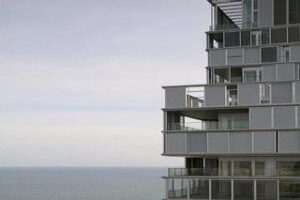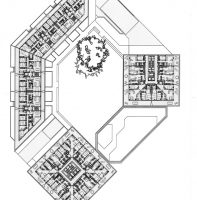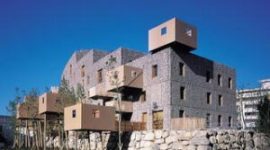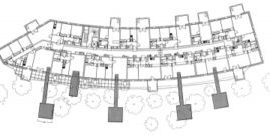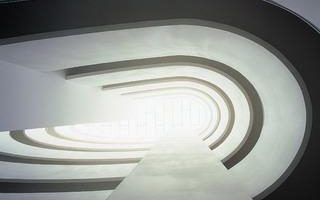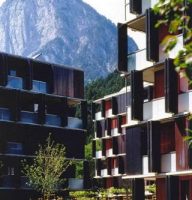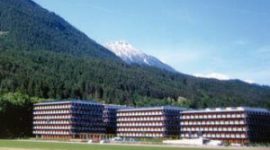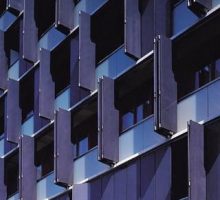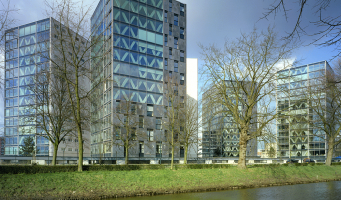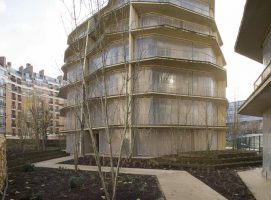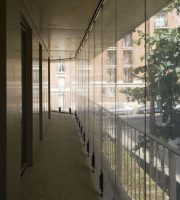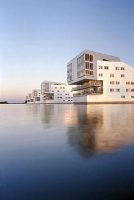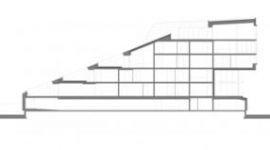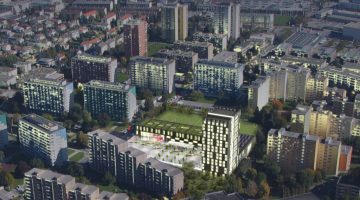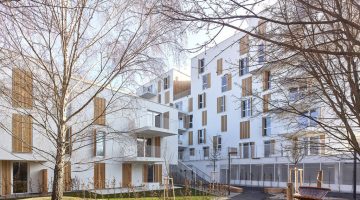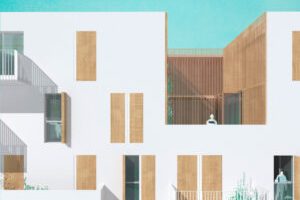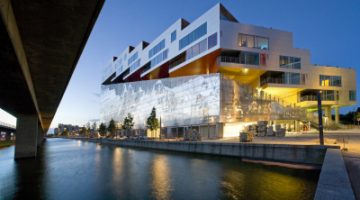

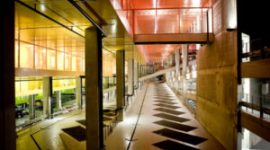
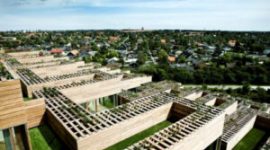
The Mountain
Main objectives of the project
The Mountain Dwellings in Copenhagen, Denmark, combine parking and living spaces in a unique way. The terraced residences cascade from the 11th floor to the street edge, utilizing the parking area as a concrete hillside base. All apartments have roof gardens for sunlight and views. The building creates a suburban neighborhood feel within an urban density. The roof gardens change with the seasons and are maintained by a watering system. Glass facades with sliding doors separate the apartments from the gardens, providing light and fresh air. The building offers convenient parking with 480 spots and a sloping elevator. Perforated aluminum plates on the north and west facades create a striking visual of Mount Everest. The apartments are naturally heated, lit, and cooled, with south-facing orientation and natural ventilation. The Mountain Dwellings provide a balance between city life and suburban tranquility.
Date
- 2008: Construction
Stakeholders
- Architect: BIG – Bjarke Ingels Group
- Architect: JDSA / Julien De Smedt Architects
Location
City: Copenhagen
Country/Region: Copenhagen, Denmark
Description
The Mountain Dwellings are located in Ørestaden, a new urban development in Copenhagen, Denmark. The program consist of 2/3 parking and 1/3 living. Rather than doing two separate buildings next to each other, we decided to let the parking area become the base for the terraced residences – like a concrete hillside covered by a thin layer of housing, cascading from the 11th floor to the street edge. In this way we merge the two functions into a symbiotic relationship. The parking area needs to be connected to the street, and the homes require sunlight, fresh air and views, thus all apartments have roof gardens facing the sun and amazing views.
The Mountain Dwellings appear as a suburban neighbourhood of garden-residences overflowing a 10-storey building – suburban living with urban density. The roof gardens consist of a terrace and a garden with plants changing character according to the changing seasons. The building has a huge watering system which maintains the roof gardens. The only thing that separates the apartment and the garden is a glass façade with sliding doors to provide light and fresh air. The residents of the 80 apartments will be the first in the quarter Ørestaden to have the possibility of parking directly outside their homes. The gigantic parking area contains 480 parking spots and a sloping elevator that moves along the mountain’s inner walls. In some places the ceiling height is up to 16 meters which gives the impression of a cathedral-like space. The north and west facades are covered by perforated aluminium plates, which let in air and light to the parking area. The holes in the facade form a huge reproduction of Mount Everest. At day the holes in the aluminium plates will appear black on the bright aluminium, and the gigantic picture will resemble that of a rough rasterized photo. At night time the facade will be lit from the inside and appear as a photo negative in different colours as each floor in the parking area has different colours. The Mountain Dwellings is located in Ørestad city and offer the best of two worlds: closeness to the hectic city life in the centre of Copenhagen, and the tranquillity characteristic of suburban life.
The entire building is naturally heated and lighted, as all apartments are oriented southward with large glazed areas/windows to let in sunlight. They are also cooled by natural ventilation. The parking lot/area is covered by perforated aluminum plates, which let in fresh air and light to the parking area. The building also has a watering system which maintains the roof gardens by redistributing rain through drip irrigation.


